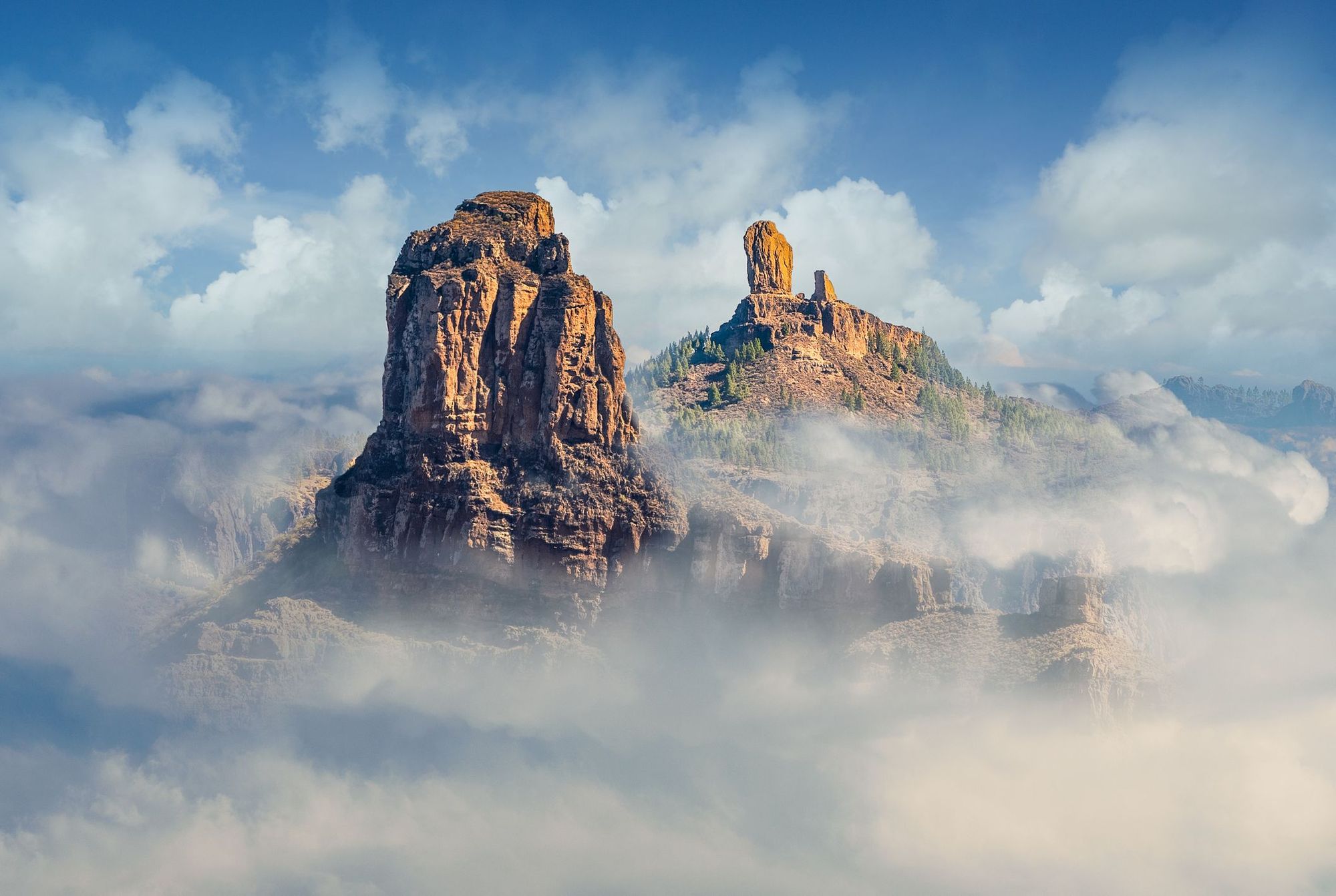Gran Canaria looks like a bicycle wheel from above. Its highest mountain, Pico de las Nieves (1,949m), rises up from the centre of the island. Deep ravines, known as barrancos, extend outwards from it like bicycle spokes. We're here to hike through these barrancos, to climb the island's mountains and explore its sunken volcanic calderas. We want to find out if the rumours are true; if Gran Canaria, renowned for its beach package holidays, is also an off-the-beaten track hiking destination.
Our five-day journey begins in Barranco de Guayadeque, one of the most biodiverse and historically significant gorges on the island. On our first night we watch the setting sun gild the top of the rocky walls. They darken to purple as it sinks behind them.
We eat in a traditional cave restaurant; Canarian cheeses, papas arrugadas con mojo (potatoes cooked in saltwater, served with paprika sauce), and gofio - toasted maize flour made into a smooth, nutty-tasting puree. Just when we’re feeling full, the actual main course arrives - a gargantuan plate of tender, fire-cooked meat and vegetables. Afterwards, stomachs straining, we retire to our rooms; cave apartments which are hewn directly into the cliff face.

The next day, we wake early to beat the blazing heat of summer, and walk up a deserted road to the trailhead. As we turn the corner, our guide Lucas beckons to us, a finger to his lips and eyes sparkling. In front of us is an astounding view of the sun rising up above the ravine, illuminating the ravine’s crevices and terraces. A sea of clouds breaks across the horizon in soft waves.
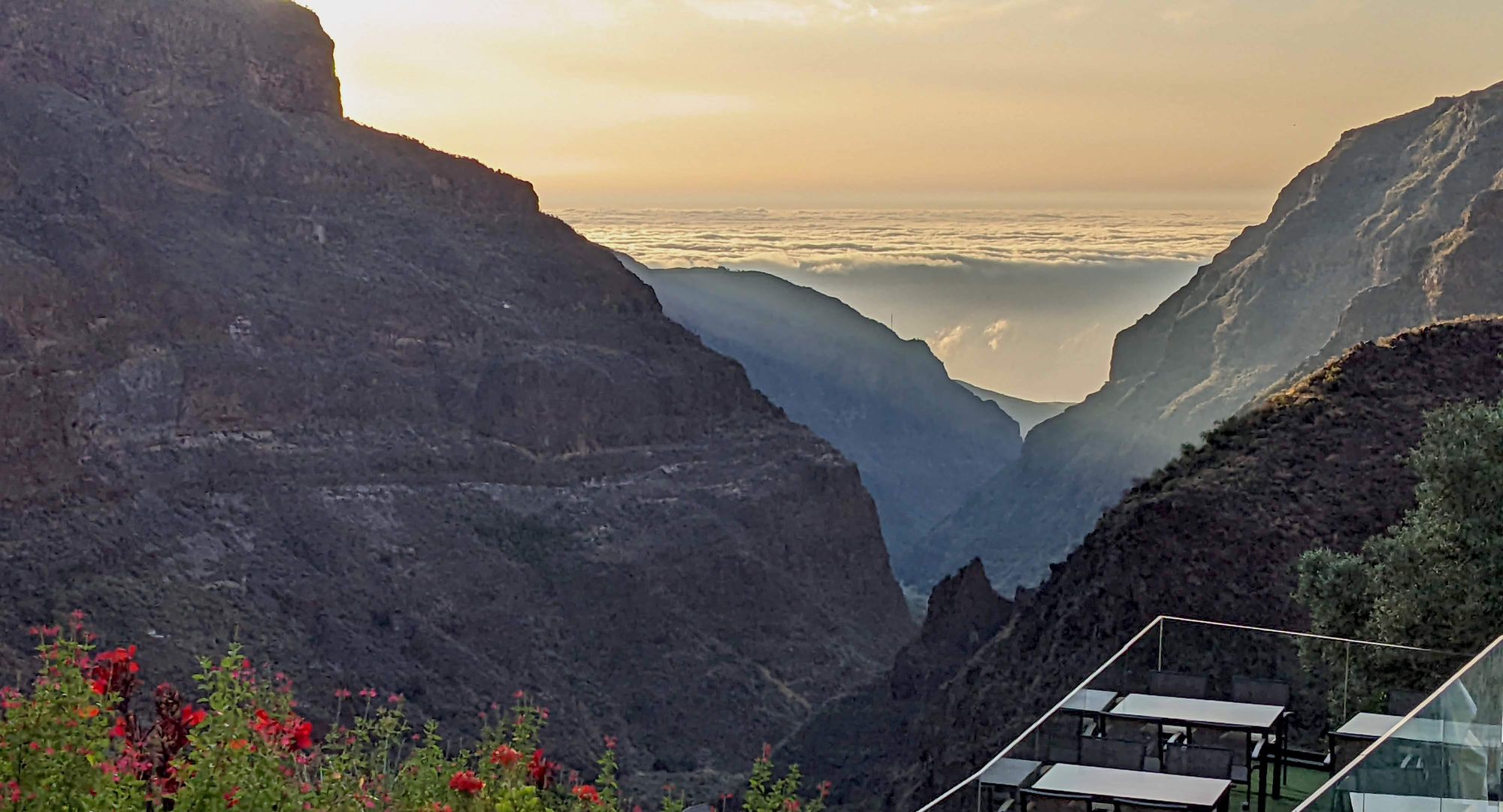
“This is where the earliest settlers to Gran Canaria lived,” Lucas says. “They came from North Africa, probably around 2,000 years ago. At that time there would have been a freshwater river at the bottom of the gorge. The caves were good places to live in - cool in summer, and warm in winter.”
Nobody knows how, or why, the Guanches - as the indigenous Canarians are now known - arrived on the islands. We do know that they lived in relative isolation for over a thousand years, allowing a unique culture to evolve on each of the Canary Islands. On Gran Canaria, the Guanches did not develop a boat building culture. They didn’t use metals and they didn’t invent the wheel. They did, however, make some rather beautiful ceramics (and were brilliant at mummification). This isolation was shattered by Spanish settlers in 1402.
The burning blue bowl of sky meets the ocean at the horizon; in the distance is the misty silhouette of Tenerife’s Monte Teide volcano
“It took them 100 years to conquer the island. The settlers might have had guns but the Canarians knew the terrain. They could hide in the mountains; they threw rocks,” Lucas says.
We walk through aromatic pine forests, and then scramble up to the rocky summit of El Pico de Las Nieves. With our backs to Morro de Agujereada, a large stone on the summit, we stare out at the view. We can see the pine forest below us and the phallic-shaped Roque Nublo in front. The burning blue bowl of sky meets the ocean at the horizon; in the distance is the misty silhouette of Tenerife’s Monte Teide volcano.
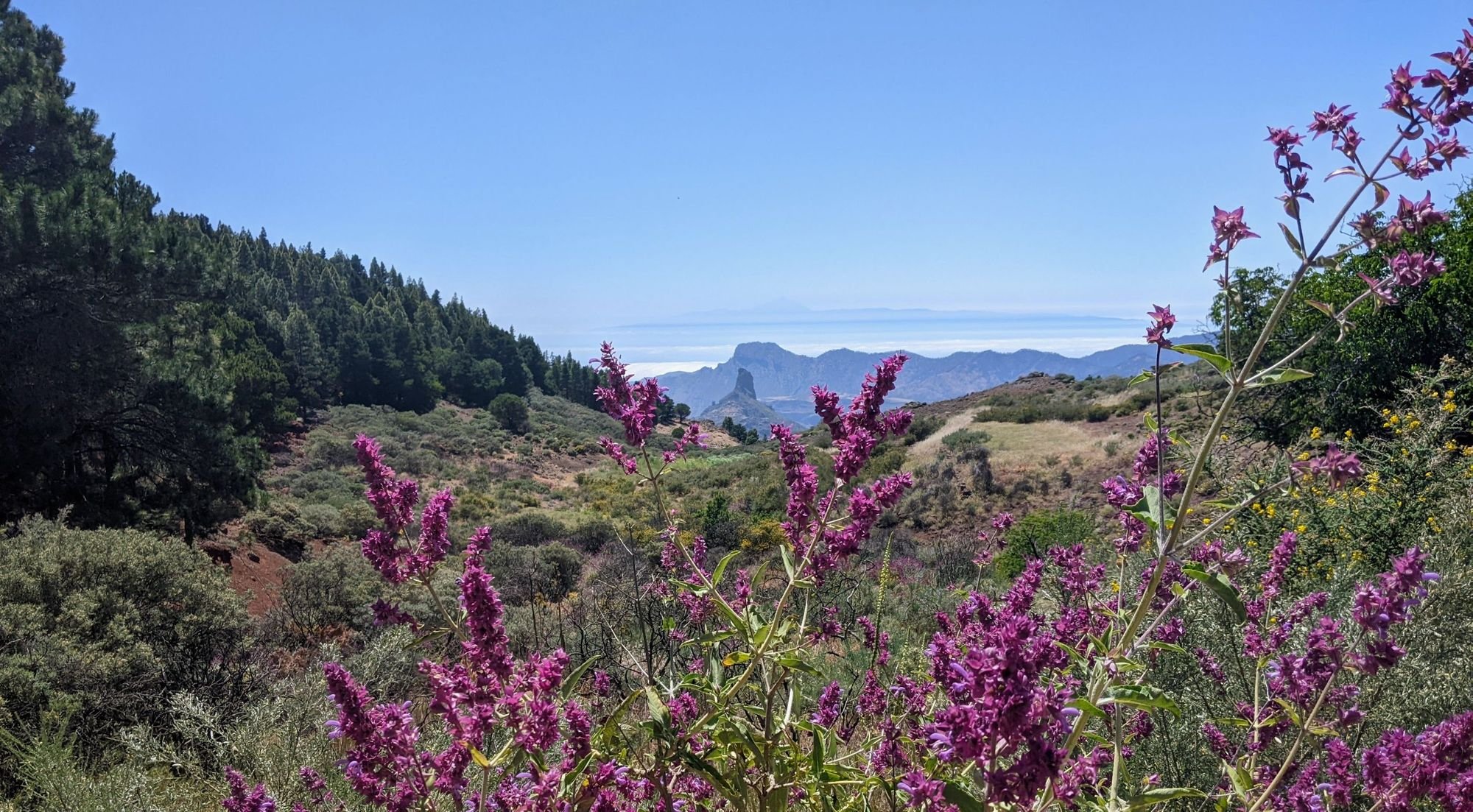
Lunch arrives as if by magic. It’s been made at Lucas’ mum’s restaurant and driven all the way out to us. Carrot salad, tender chicken thighs, and marinated tofu - not a soggy sandwich in sight.
Now we’re full and tired and hot, the final couple of hours is a bit of a trudge. But Lucas entertains us with stories of the island, and teaches us about the island’s flora and fauna, like the purple sage currently in bloom. Just as we’re really beginning to flag, our spirits are lifted by the news that there is a swimming pool and chilled beer waiting for us. It’s a great evening, made even better by Lucas’ mum’s homemade boeuf bourguignon.
It’s the last remnant of a mountain formed by volcanic eruption - everything around it has been eroded away
Fast forward half a day and we’re standing in front of Roque Nublo, one of the world’s largest freestanding rocks. It’s the last remnant of a mountain formed by volcanic eruption - everything around it has been eroded away, leaving a giant finger extending upwards towards the sky.
“Eventually, this rock will be gone too. Then it will look like Fuerteventura and Lanzarote, the oldest Canary Islands. In fact, looking at the islands is a lesson in geology. The youngest islands in the west - El Hierro and La Palma - will eventually look like Tenerife and La Gomera, the next youngest,” Lucas says.
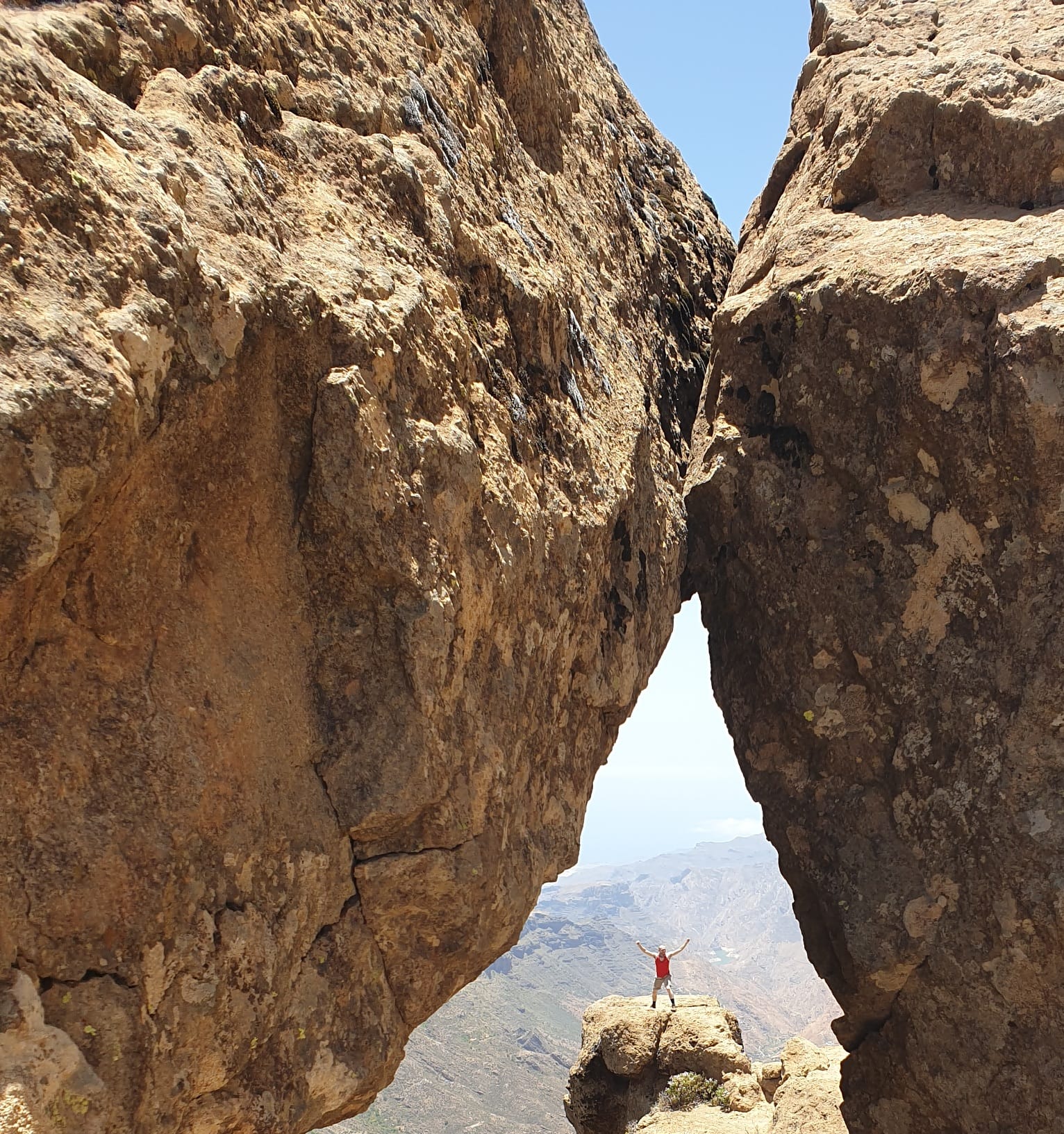
The lessons continue - Lucas has an abundance of knowledge about the island.
“It started as a personal thing; I wanted to be proud of the place where I grew up. To find out its history, and seek out its hidden places,” he tells me later.

The next day begins with a cave meditation - a secret spot hidden along our highland trail. The only sign that anyone else has been there is a small posy of dried flowers. We’re walking through the Sacred Mountains now, which are pockmarked with caves used as temples - the walls are etched with ancient Canarian fertility symbols, including Chairaxi, the Guanche fertility goddess.
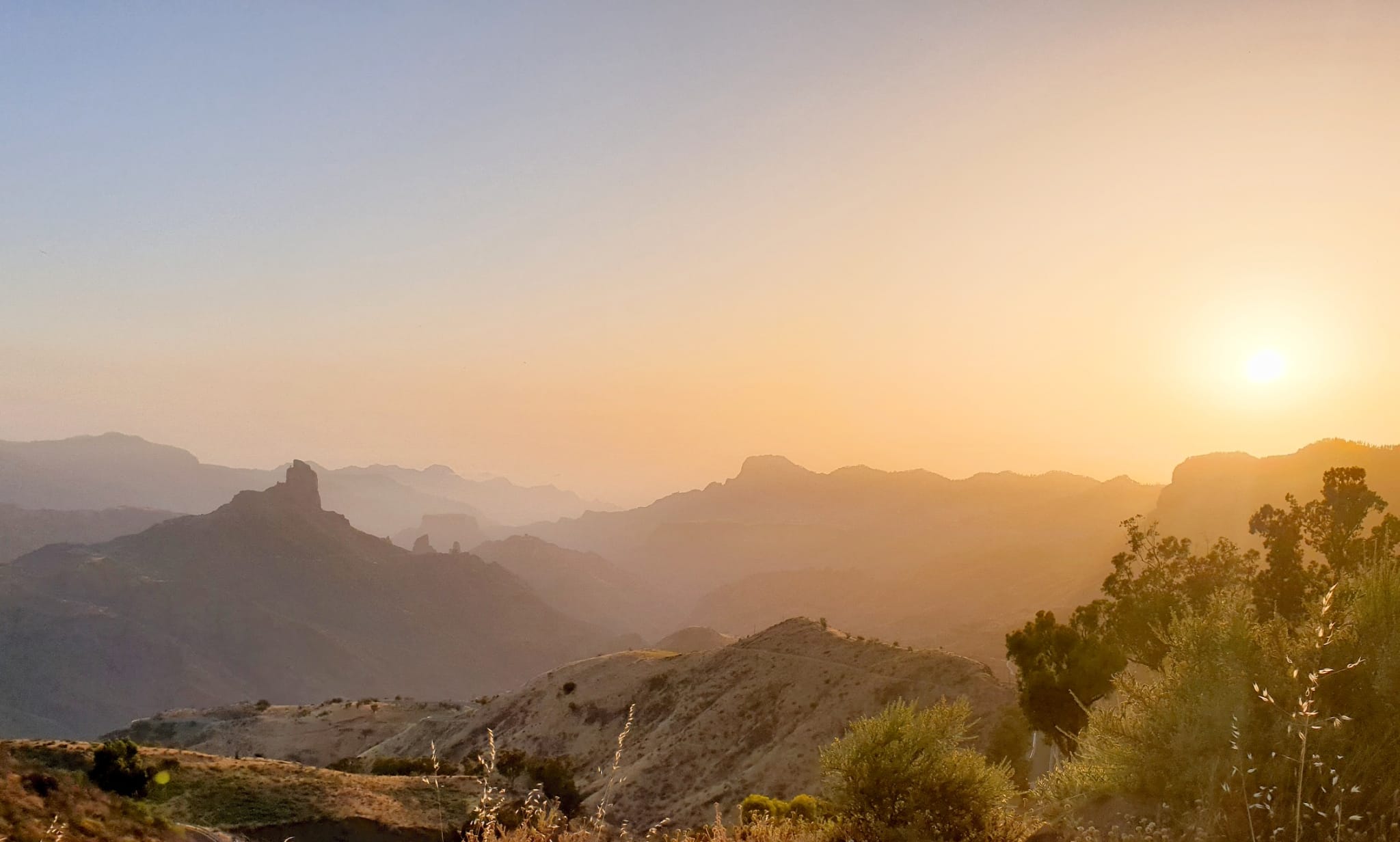
In Artenara, the highest village on the island, we visit an interpretation centre to learn more about Risco Caído, a vast troglodyte complex nearby. There’s a replica of its most important feature (the real one, which we pass later, is closed to the public) - a cave where sunbeams enter through an upper window, illuminating a calendar on the western wall that tracks the solstice.
There’s a second museum too - a living, breathing example of a Guanche cave house. We wander from room to room, taking in the rows of ceramic pots, the dried corn hanging from the ceiling, ready to be made into gofio, the glass bottles and the cheese-maturing shelf. Living in a cave wouldn’t be so bad, we agree. Especially with this view.
That week, I fell in love with an island. Gran Canaria is known for being a package tourist destination, where Brits blister themselves raw on its beaches. But you need to head inland, through the clouds and into the mountains, to discover the island's soul and unearth its secrets.
Feeling inspired? You can do this trip yourself - our Hike the Volcanic Island of Gran Canaria adventure


